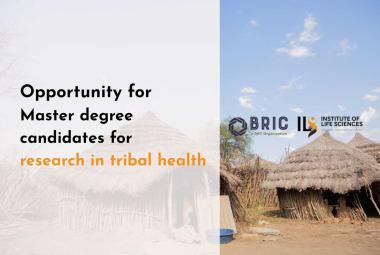{ DOWNLOAD AS PDF }
ABOUT AUTHOR
Shashank Chaturvedi
Department of Pharmaceutics
Invertis Institute of Pharmacy,
Invertis University, Bareilly, U.P
shashank.c@invertis.org
ABSTRACT
The generic drug and branded drug is a confusing concept, and is a matter of serious concern for the pharmaceutical sector after the imposition of the rule that every physician should prescribe drugs with generic names legibly and preferably in capital letters and he/she shall ensure that there is a rational prescription and use of drugs. The generic drug should be bioequivalent before they can be prescribed as an alternative from their branded counterparts. The possible impacts over the Pharmaceutical Sector should be assessed before implementing this mammoth decision.
[adsense:336x280:8701650588]
|
PharmaTutor (Print-ISSN: 2394 - 6679; e-ISSN: 2347 - 7881) Volume 5, Issue 5 Received On: 29/04/2017; Accepted On: 29/04/2017; Published On: 01/05/2017 How to cite this article: Chaturvedi S; Generic drug prescription: Possible issues, impacts and consequences ; PharmaTutor; 2017; 5(5); 5-8 |
INTRODUCTION
Generic medicines are those where the original patent has expired and which may now be produced by manufacturers other than the original innovator (patent-holding) company. The term “generic drug” or “generic medicine” can have varying definitions in different markets, however the term is commonly understood, as defined by the World Health Organization (WHO), to mean a pharmaceutical product which:
– is usually intended to be interchangeable with an innovator product,
– is manufactured without a license from the innovator company, and
– is marketed after the expiry date of the patent or other exclusive rights [1].
The MCI reiterated its 2016 directive, few days after Prime Minister Narendra Modi stressed on putting in place a legal framework to ensure that the doctors prescribe low cost generic medicines to the patients.
It has asked the medical community to follow its 2016 notification in which the MCI had amended the clause 1.5 of the Indian Medical Council (Professional Conduct, Etiquette and Ethics) Regulations, 2002 mandating the doctors to prescribe medicines by generic names in place of brand names.
Interestingly, this is not a new intervention. This clause now reads: “Every physician should prescribe drugs with generic names legibly and preferably in capital letters and he/she shall ensure that there is a rational prescription and use of drugs”. The words “legibly and preferably in capital letters” were not there originally.
Before going into the discussion further we have to first consider the basic difference between generic and branded drugs.
The US Food and Drug Administration [FDA], which regulates the pharmaceutical market in the United States and almost all over the world, states that:
To gain FDA approval, a generic medicine must:
i. Contain the same active ingredient as the originator medicine (inactive ingredients may vary)
ii. Be identical in strength, dosage form, and route of administration
iii. have the same use indications
iv. be bioequivalent
v.meet the same batch requirements for identity, strength, purity, and quality
vi. be manufactured under the same strict standards of FDA's good manufacturing practice regulations required for originator products [2].
So, the major point of concern in Indian perspective is whether the generic drugs marketed in India show bioequivalence with their branded counter parts?
The FDA’s formal definition of bioequivalence is: the absence of a significant difference in the rate and extent to which the active ingredient or active moiety in pharmaceutical equivalents or pharmaceutical alternatives becomes available at the site of drug action when administered at the same molar dose under similar conditions in an appropriately designed study [3].
Therefore, bioequivalent drugs are pharmaceutical equivalents whose rate and extent of absorption are not statistically different when administrated to patients or subjects at the same molar dose under similar experimental conditions [4].
So, from the bioequivalence point of view if the generic drug show bioequivalence with the branded counterpart it can be a good alternative, but the generic drugs marketed in India is still a question to be answered. Therefore merely complying prescription with generics drugs will provide sufficient therapeutic safety and efficacy is another question still to be answered
Challenges with Generic drug prescription
There are numerous challenges with generic drug prescription
• Lack of awareness.
• Generic drug with brand.
• Trade margins for generic drugs vs branded drug (commission based prescription)
• Therapeutic safety and efficacy of generic drug.
• Non-Pharma background Marketing representatives, Drug manufacturer, Drug analyst.
• Bioequivalence
The generic drug market suffers lack of awareness due to the fact that Indian drug manufacture till date advertize their products with their brand names, moreover majority of population in India cannot understand technical names of the drugs, and they rely completely over the healthcare professionals.
The challenge obstructing the popularity of generic drug is the economics involved. As, the patient completely rely over health care professionals (physicians, pharmacists) they only purchase drugs with recommendations due to their illiteracy or less knowledge about the medical terminologies, this in turn directly or indirectly involves give a chance of commission based prescription.
Majority of generic drug marketed in India are chemical equivalent (possess same active pharmaceutical ingredient). They provide similar therapeutic response depends merely on the factors like the inactive pharmaceutical ingredients (additives), the process involved for manufacturing. Therefore their safety and efficacy is a matter of debate. This fact can be understood by comparing the composition of two popular brands of GlaxoSmithKline with different additives the primitive CROCIN and the modern CROCIN Advance. The latter woks on Optizorb technology. The other difference is that the new combination disperses five times faster and is absorbed 37% faster than standard tablets. In this example CROCIN Advance proved to have faster release which in turn contributes to quicker response. Pharma-manufactures use different organoleptic additives to impart characteristic properties which may or may not alter the therapeutic profile of the generic drug.
Promotion of generic drug cannot be achieved without the involvement of trained Pharmaceutical manpower. From the drug manufacturing, analysis, packaging, marketing to sale shall be done only under the provisions of THE PHARMACY ACT 1948. This clearly indicates the recruitment of trained (D.Pharm / B.Pharm / M.Pharm / Pharm.D and Ph.D) Pharma personals for successfully implementing the policy of generic drug prescription.
The generic drug whether in any composition should follow the bioequivalence criteria. According to
Central Drug Standard Organization (CDSCO): Bioequivalence studies should be conducted for the comparison of two medicinal products containing the same active substance.
Two products marketed by different licenses, containing same active ingredient(s), must be shown to be therapeutically equivalent to one another in order to be considered interchangeable. There are several test methods available to assess equivalence including [5]:
i. Comparative bioavailability (bioequivalence studies), in which the active drug substance or one or more metabolites in an accessible biological fluid such as plasma, blood or urine.
ii. Comparative pharmacodynamic studies in humans
iii. Comparative clinical trials
iv. In-vitro dissolution tests
NOW YOU CAN ALSO PUBLISH YOUR ARTICLE ONLINE.
SUBMIT YOUR ARTICLE/PROJECT AT editor-in-chief@pharmatutor.org
Subscribe to Pharmatutor Alerts by Email
FIND OUT MORE ARTICLES AT OUR DATABASE
When Bioequivalence studies are not necessary
i. When new drug are to be administered parenterally (e.g intravenous, intramuscular, subcutaneously, intrathecal administration etc.) as aqueous solution and contain the same active substance(s) in the same concentration and the same excipients in comparable concentrations;
ii. When the new drug is a solution for oral use, and contains the active ingredient in the same concentration, and does not contain an excipient that is known or suspected to affect gastro-intestinal transit or absorption of the active substance;
iii. When the new drug is a gas;
iv. When the new drug is a powder of reconstitution as a solution and the solution meets either criteria (a) or criterion (b) above;
v. When new drug is an otic or ophthalmic or topical product prepared as aqueous solution and contain the same active substance(s) in the same concentration(s) and essentially the same excipients in comparable concentrations;
vi.When new drug is an inhalational product or nasal spray, tested to be administered with or without essentially the same device as the reference product, prepared as aqueous solutions, and contain the same substance(s) in the same concentration and essentially the same excipients in comparable concentrations. Special in-vitro testing is required to document device performance comparison between reference inhalation product and the new drug product.
For the (v) and (vi) above, the applicant is expected to demonstrate that the excipients in the new drug are essentially the same and in comparable concentrations as those in the reference product. In the event this information about the reference product cannot be provided by the applicant, in vivo studies need to be performed.
Impact of prescribing generic drug on Indian Pharma trade:
i. Patient will gain attraction of availability of branded and generic drugs.
ii. Drug manufacturer and health care service provider relationship will be more transparent.
iii. Unethical prescription writing will come to an end.
iv. Cost of medication will be reduced.
v.New horizon for drug manufacturer.
vi. Accessibility of drugs to needy will improve regardless of their socio and economic factors.
vii. Present business model for most of the drug manufacturer will require reconsideration.
viii. Pharma-stocks will collapse.
ix. Pharma industry annual turnover will be affected.
x. Medical representative have to change their working model.
xi. A paradigm shift from doctors to pharmacist.
xii. Research and Development will be hampered.
xiii. Penning down Multivitamins and products with multiple drug combination will be tedious task for the doctor.
CONCLUSION
The generic drug can substantially reduce the cost involved in the treatment but the safety and efficacy shall not be compromised. The generic drug must prove to be bioequivalent with their branded counterparts. The possible and immediate impact of this decision will be that the unethical prescription by the doctors and the commission based prescription will be hampered. This decision will create new doors in the manufacturing of generic products, which in turn will impact the Research and Development of the New Chemical Entity (NCE). The Pharma drug manufactures have to change or modify their business model which in turn will impact the work force directly or indirectly involved with this sector. Ethical manufacturing, testing, marketing, selling and prescription should be the need of the hour with the utilization of trained and skilled (Pharmacy professionals) as Production Chemist, Drug analyst, Sales and Marketing executives and pharmacist for prescription handling.
REFERENCES:
1. Generic Drugs. http://www.who.int/trade/glossary/story034/en/index.html. (Accessed on 27-april-17).
2. What Are Generic Drugs? http://www.fda.gov/Drugs/ResourcesForYou/Consumers/BuyingUsingMedicineSafely/UnderstandingGenericDrugs/ ucm144456.htm. (Accessed on 27-april-17).
3. US-FDA: Guidance for Industry - Bioavailability and Bioequivalence. In FDA Guidance for Industry.
4. Process for Approving Generic Drugs. http://www.fda.gov/Training/ ForHealthProfessionals/ucm090215.htm. (Accessed on 27-April-17)
5. Guidelines for bioavailability and bioequivalence studies, central drug standard organization, directorate general of health services, ministry of health and family welfare, government of india, new delhi, (2005), page 3.
NOW YOU CAN ALSO PUBLISH YOUR ARTICLE ONLINE.
SUBMIT YOUR ARTICLE/PROJECT AT editor-in-chief@pharmatutor.org
Subscribe to Pharmatutor Alerts by Email
FIND OUT MORE ARTICLES AT OUR DATABASE









